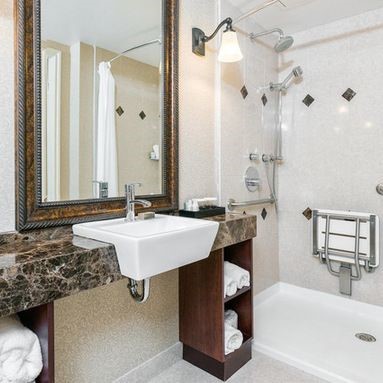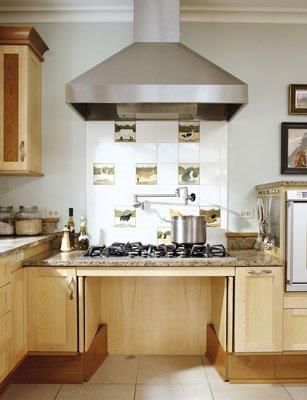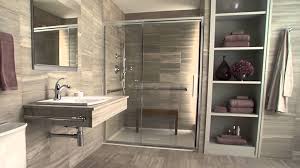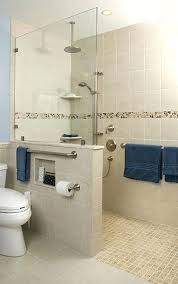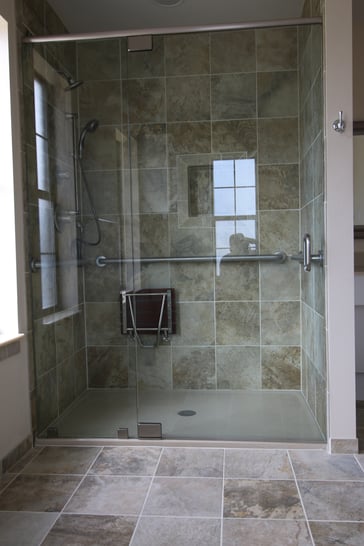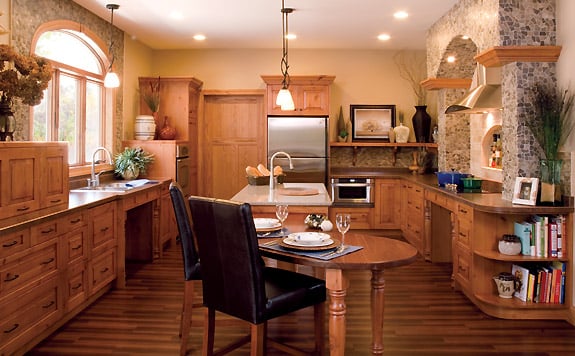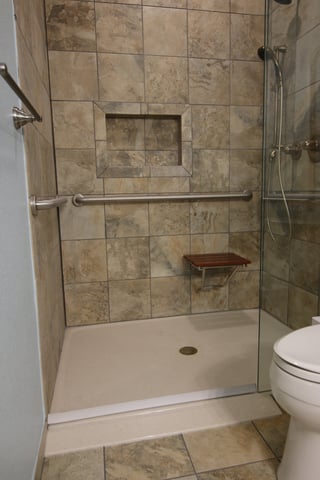Universal design refers to broad-spectrum ideas meant to produce buildings, products and environments that are inherently accessible to older people, people without disabilities and people with disabilities. Universal Design adaptations have a broad market appeal to everyone for achieving ease of use, safety, and convenience accommodating a certain reality. The reality is that all people exist along a continuum of human performance as per their personal traits and characteristics regardless of their age. A universal approach to design takes into account that everyone has varying degrees of ability and disability rather than someone is either fully-functional or disabled. A universal design approach is appealing to all users no matter their age, size, or physical well being. Universal Design is important because our current design standards for housing do not address the design needs of more than one third of our population. Too often the designers of homes allow the built environment to define the capabilities of the resident. Universal Design allows for our antiquated architecture to be defined by both our changing human needs and abilities.
There are seven criteria or principles which must be met to be considered a universal design no matter which area of the home you are referring to. Any design must be equally useful to everyone, have flexibility in it's usefulness, be simple and intuitive, be perceived by everyone, have a tolerance for error, require little physical effort, and it must maintain an adequate area for approach and use. Any complexity or discriminating attribute to a design will doom it in terms of being considered universal in nature. However what better way can you improve on a home's total visitability by everyone? Universal Design is the design of products and environments to be usable by all people, to the greatest extent possible, without the need for adaptation or specialized design.
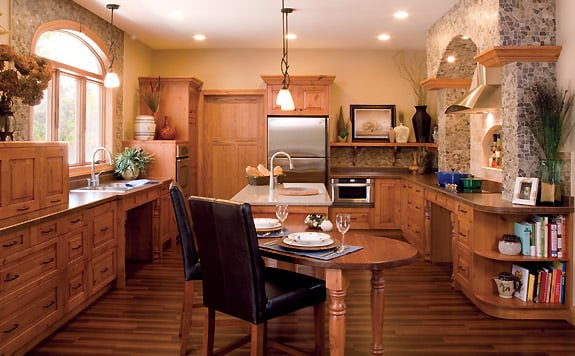
Whether you refer to this revolution in housing today as accessible design, inclusive design, or universal design it is all about making a home safe, attractive, and easy to use for all of the inhabitants. It has nothing to do with the age, agility, or status of life for anyone living within the home. The main intent of this way of thinking is to be sure the inhabitants are able to enjoy their home throughout their entire lifetime utilizing the universal design principles which have been designed into their home when it was built. This way aging in place can be accomplished without the expense and hassle of having to make periodic changes to the home to meet a person's ever changing physical needs. You can plan for all stages of your life cycle with some fore thought which, once discovered, you find is just common sense. Even if you are in perfect health you can be disrupted by a minor mishap. A more serious injury can change things forever when you no longer have all your abilities.
Universal Design principles do not equate to accessibility design even though they both are concerned with ergonomics and human function issues. The ADA guidelines for accessibility were created as a means to help those people with extreme disabilities within our society who are a narrow and specific cross section of the masses. A UD approach broadly takes into account moderate impairments or disabilities, temporary health conditions, and the varying abilities of anyone within a home regardless of their age or size. In other words, an ADA accessible home would be designed for the one person with the disability whereas a UD home is designed for everyone and should be used with any custom tub shower conversion.
Accessibility should be a concern no matter what your age. If your concerns are not for you, barring any life changing accident, they could concern the accessibility and safety of another generation's independence. As we age, our society is beginning to realize that our homes need to accommodate future life changes. The aging in place phenomena deals with home modifications to existing homes while a universal design home would hardly ever need to address these abrupt issues even though we cannot solve all the future issues for everyone. Everyone ages differently and has their own list of specific needs.
A sensible checklist for a home concerning Universal Design would include but is not limited to:
1. Limiting stairs while avoiding sunken rooms or multi-story floor plans with raised entrances
2. Automating lighting while controlling groups of lighting throughout the home
3. Including natural lighting through doors, windows, and skylights
4. Using multiple shower heads in the shower with rain, conventional and hand held units
5. Incorporate curbless showers into the design of your bathroom for ease of entering no matter if a wheelchair is ever involved
6. When deciding on your faucets, door handles, or cabinet pulls always pass the closed fist test for operation
7. Use nonslip flooring especially in wet areas using cork or smaller floor tiles which in turn increase the grout lines
8. Create a correct kitchen work area with the shortest distance between the stove, sink, and refrigerator as possible
9. Provide accessible lower storage in base cabinets storing the most used items on pull out shelving or in drawers
10. Lower your upper cabinets to 15" above your 34" universal cabinet top
11. Leave at least 42" between your cabinets when 48" is much better
12. Have multiple height cabinet tops to double as work surfaces for those who are seated or other little helpers in the kitchen
Universal design ideas do not strictly deal with accessibility or aging in place design and does not implement precise ADA standards but it does offer flexibility to add accessories now and later to those planning ahead or to the end user. It also provides for a wide range of human performance characteristics for the way people use spaces within their homes including well integrated usability features. These adaptations have a broad market appeal to everyone for achieving ease of use, safety, and convenience accommodating a certain reality. That reality is that all people exist along a continuum of human performance as per their personal traits and characteristics regardless of their age. A universal approach to design takes into account that everyone has varying degrees of ability and disability rather than someone is either fully-functional or disabled. A universal design build project is appealing to all users.
Aging in place home modifications are available through T-Square Company in Austin. Each universal design/build situation will be customized to fit your personal needs. Call 512-444-0097 today to begin to prepare for the accessible second chapter of your life while remaining safe and secure in your existing home.
CAPS 1636580




